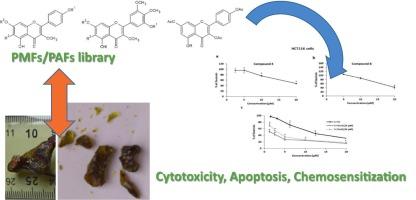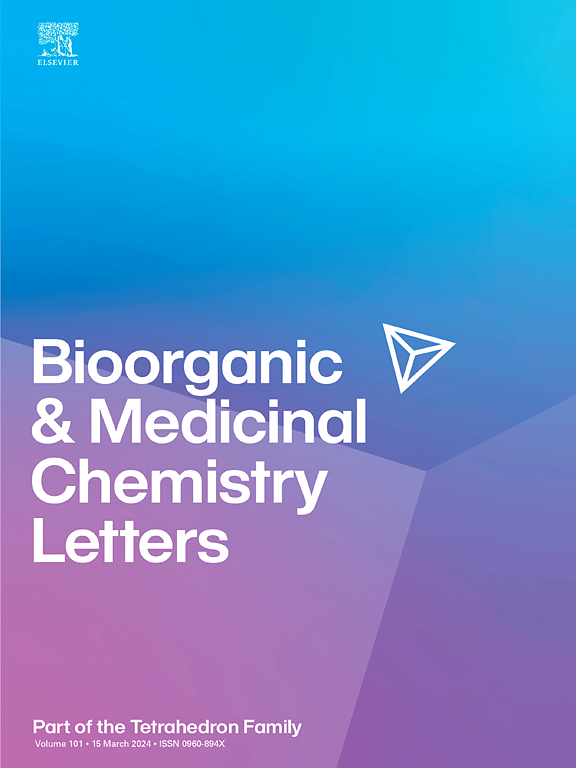Polymethoxy-/polyacetyl-flavones cytotoxicity towards colorectal and prostate cancer cell lines: SAR, mechanisms of action and evaluation as potential adjuvants in chemotherapy
IF 2.2
4区 医学
Q3 CHEMISTRY, MEDICINAL
引用次数: 0
Abstract
A set of natural and semi-synthetic polymethoxy- and polyacetyl-flavones (PMFs/PAFs) was evaluated towards colorectal (HCT116) and prostate (PC-3) cancer cells. The most active compounds were then combined with 5-fluorouracil (5-FU) or with adriamycin (ADR) in order to determine a potential synergism, focusing on contingent changes in cell cycle and apoptosis. Two derivatives were strongly cytotoxic. They also induced G0/G1 cell cycle arrest, but differently behaved when combined to the reference drugs 5-FU or ADR. The induction of apoptosis was stronger towards HCT116, noticeably increasing the activity of 5-FU, suggesting a potential additive effect. Besides, the results of soluble caspase-cleaved K18 showed that another phenomenon such as autophagy may be involved towards PC-3 cells and should be deciphered. Consequently, these two PMFs are considered as suitable candidates for further studies in hit-to‑lead approach, in a context of a therapeutic protocol involving natural products as chemosensitizers, aiming to increase the potency and to reduce the side effects of antitumor drugs.

多甲氧基/多乙酰黄酮对结直肠癌和前列腺癌细胞系的细胞毒性:化疗中潜在佐剂的SAR、作用机制和评价
研究了一组天然和半合成的多甲氧基和多乙酰基黄酮(PMFs/PAFs)对结直肠癌(HCT116)和前列腺癌(PC-3)细胞的作用。然后将最有效的化合物与5-氟尿嘧啶(5-FU)或阿霉素(ADR)联合使用,以确定潜在的协同作用,重点关注细胞周期和凋亡的偶然变化。两种衍生物具有很强的细胞毒性。它们也能诱导G0/G1细胞周期阻滞,但与对照药物5-FU或ADR联合使用时表现不同。HCT116对细胞凋亡的诱导作用更强,5-FU活性明显增加,提示可能存在叠加效应。此外,可溶性caspase裂解K18的结果表明,PC-3细胞可能涉及自噬等另一种现象,应予以破译。因此,在涉及天然产物作为化学增敏剂的治疗方案的背景下,这两种PMFs被认为是hit-to - lead方法进一步研究的合适候选者,旨在提高抗肿瘤药物的效力并减少其副作用。
本文章由计算机程序翻译,如有差异,请以英文原文为准。
求助全文
约1分钟内获得全文
求助全文
来源期刊
CiteScore
5.70
自引率
3.70%
发文量
463
审稿时长
27 days
期刊介绍:
Bioorganic & Medicinal Chemistry Letters presents preliminary experimental or theoretical research results of outstanding significance and timeliness on all aspects of science at the interface of chemistry and biology and on major advances in drug design and development. The journal publishes articles in the form of communications reporting experimental or theoretical results of special interest, and strives to provide maximum dissemination to a large, international audience.

 求助内容:
求助内容: 应助结果提醒方式:
应助结果提醒方式:


